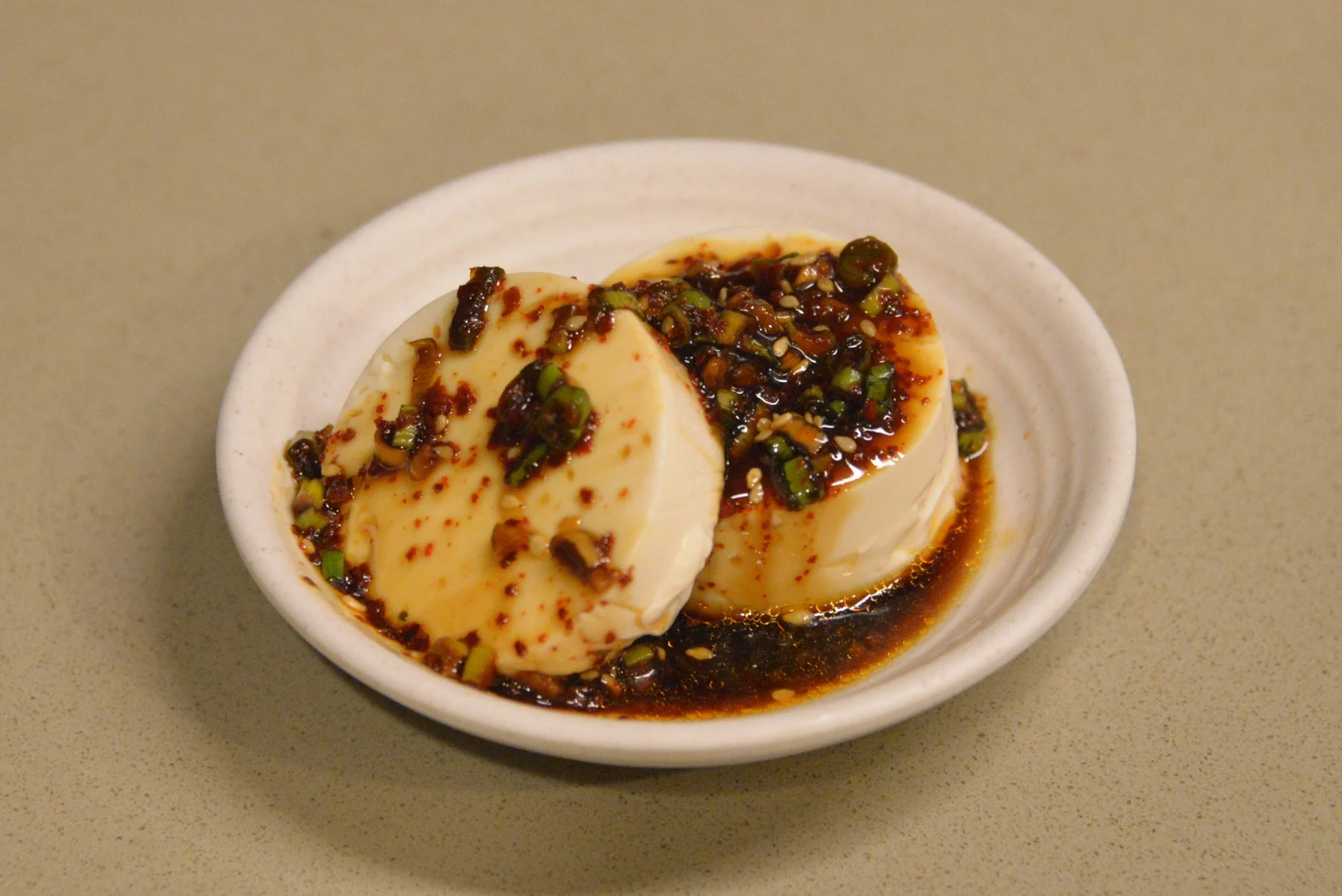Korean Steamed Spicy Soft Tofu Banchan, Soondubu Jjim 순두부찜, represents the gentle, nurturing side of Korean cuisine, where the delicate nature of soft tofu is elevated through a perfect balance of spice and seasoning. This warming dish holds a special place in Korean winter dining traditions, offering comfort and sustenance during cold months. Unlike many robust Korean dishes, soondubu jjim showcases the Korean culinary art of contrast – the silky, tender tofu serving as a canvas for the bold, spicy sauce that defines the dish.
What makes Korean Steamed Spicy Soft Tofu Banchan particularly special is its ability to transform humble soft tofu into a luxurious banchan through minimal intervention. This dish exemplifies the Korean cooking philosophy where simple ingredients, treated with respect and precision, create extraordinary results. The residual broth that forms as the sauce melds with the tofu’s natural moisture creates an additional layer of flavor that Korean diners particularly treasure, making it a perfect accompaniment to rice or as part of a larger meal.
In modern Korean dining, Korean Steamed Spicy Soft Tofu Banchan bridges the gap between traditional banchan and contemporary tastes, appealing to those seeking both comfort food and healthier options. Whether served in trendy Seoul cafes or traditional family kitchens, this dish maintains its appeal across generations, particularly valued during the winter months when its warming properties and nutrient-rich profile are most appreciated.
Why You’ll Love This Recipe
- Ready in just 15 minutes
- Perfectly balanced spicy-savory flavors
- Warming and comforting
- High in protein
- Versatile side dish
- Naturally vegetarian (vegan with alternative soy sauce)
What is Soondubu Jjim?
Korean Steamed Spicy Soft Tofu Banchan, Soondubu jjim (순두부찜) is a steamed soft tofu dish where silken tofu is gently heated and topped with a vibrant, spicy sauce. The dish is characteristic of Korean temple cuisine, where the pure flavor of tofu is enhanced rather than masked by its seasonings.

Korean Spicy Soft Tofu banchan
Ingredients
- 1 tube soft tofu
Spicy Sauce
- 1 tbsp soy sauce
- 1 tsp rice syrup (or sugar)
- 1 tbsp korean red pepper flakes (gochugaru)
- 1 clove garlic minced
- 1 tsp sesame oil
- 1 tsp sesame seeds
- 1 green onion(s) chopped
Instructions
- Bring a small pot of water to boil.
- Cut the soft tofu tube in half and place in boiling water.
- Cook for 5 minutes.
- Remove tofu to a serving dish.
- Mix sauce ingredients and spoon over top the tofu.
- Serve as Banchan!
Nutrition
Recipe Tips
- Handle the soft tofu very gently to maintain its shape
- Adjust the amount of red pepper flakes to your preferred spice level
- Serve immediately while still warm
- Use the highest quality soft tofu available for the best texture
- Allow the sauce to slightly warm from the heat of the tofu
Serving Suggestions
Serve with:
- Steamed rice
- Other room temperature banchan
- Korean soups
- As part of a traditional Korean meal
- Alongside grilled meats
Variations
- Add a drizzle of chili oil for extra heat
- Include finely chopped mushrooms in the sauce
- Use honey instead of sugar for a different sweetness
- Add a touch of fish sauce for extra umami (non-vegetarian version)
Nutrition Information
Per serving (approximate):
- Calories: 100
- Protein: 7g
- Fat: 6g
- Carbohydrates: 4g
- Sodium: 280mg
Note: Nutrition values are estimates and may vary based on specific ingredients used.
Storage
Best served immediately while warm. If necessary, store the tofu and sauce separately in airtight containers in the refrigerator for up to 2 days. Reheat the tofu gently in simmering water before serving.
My Essential Korean Pantry contains several of these ingredients, specifically:
– Sempio Soy Sauce
– Kadoya Sesame Oil
– Shirakiku Roasted Sesame Seeds


Leave a Reply